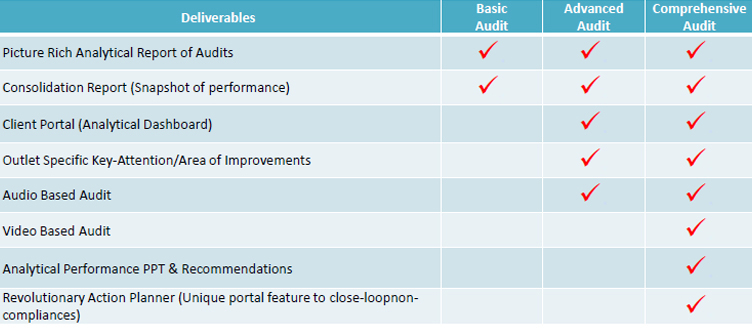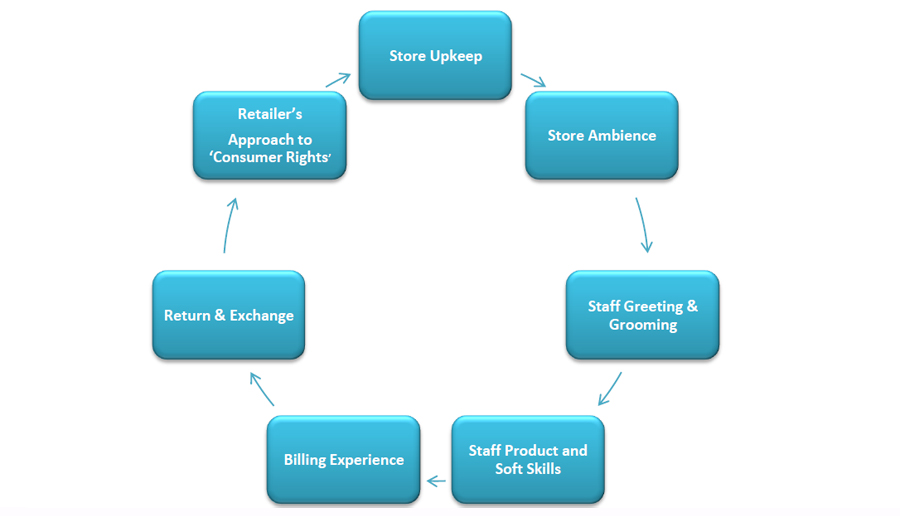APPLICATION & AUDIT STAGES
1. Brief on 3 types of Mystery Audit namely: Basic, Advance and Comprehensive

2. The parameters covered

3. The benefits for conducting such audit
- Measuring & monitoring service delivery.
- Evaluating ambience & facilities as perceived by the customer.
- Testing the functionality of internal procedures and SOPs.
- Ensuring product/service delivery quality.
- Enforcing employee integrity and knowledge.
- Review customer brand perception.
- Increased competitive advantage.
- Ensuring positive customer relationships on the front line.
- Engaging and motivating employees.
- Identifying training needs.
4. How it helps to correct the gap
Mystery shopping is an exceptional tool where a well-trained and brand conversant person visits an outlet with the objective of measuring the quality of customer experience.
Many companies wonder what customers think when they walk into their stores, go through the purchasing process and leave with the items they purchased. Mystery shopping gives a company an inside look into the customer experience and provides it with a way to gauge customer satisfaction. This is extremely important when trying to find ways to innovate and grow a company’s customer base. Without the reports that mystery shoppers submit, companies would be missing out on important information about their business and they would have less of strategic ideas as to how to continuously improve.
Observations from the Mystery Audit report not only help identify the gaps but also highlight best practices across the stores which can be replicated or adopted across the network of outlets. It also helps the companies with a wealth of insights on the customer value perceived index and helps to identify specific training needs.
5. How does the Mystery Audit findings assist in helping an organization to create a seamless and frictionless flow of continuous improvement?
In today’s world which is focused on taking Customer Experience to the next level, Mystery Audits have become an integral part of regularly identifying ‘pride-pointers’ & ‘concern areas’ towards the same. Further to identification of the gaps what becomes critical is the gap fulfillment.


